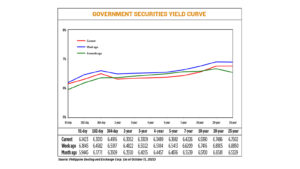Thinking strategically about pay scales

What’s the ideal salary range for ordinary workers? What should be the gap between job grade levels 1 and 2 and so on? Is there a standard percentage to follow for a company to remain competitive in attracting the best workers? — Still Looking.
Not only to attract but to retain people in the long term. That’s the objective of having a dynamic salary structure. That means your human resource (HR) department must be on its toes to minimize employee turnover caused by the absence or inadequacy of competitive pay policies.
However, you must also understand that compensation policies are general guidelines that must be harmonized with other strategies within an organization. Without it, salary issues can become a source of conflict between labor and management. You may hear workers complaining about receiving less compared to others.
You can use a dynamic salary scale to justify the disparity. This brings us to the question: Is it advisable to release the details of the salary scale? Why not? The minimum (entry level), medium and maximum rate should be known to all concerned workers, so they know where they stand. The variance in pay depends on qualifications, seniority and merit increases, and the results of a collective bargaining agreement in unionized establishments.
What should remain confidential are the salaries of specific workers.
STARTING FROM SCRATCHBread and butter issues tend to dominate most work situations. No issue will be more talked about than improving take-home pay. Better pay enables people to go beyond meeting their basic needs, like a better home, food, clothing and education for their children.
With that as a preamble, let’s answer your question about the percentage difference between salary grades or levels. If you’re starting from zero, the best approach is as follows:
One, conduct or join a salary and benefits survey. This is important for establishing an objective basis for creating a salary scale. You can organize a survey among your friends in the industry, including your competitors.
If you’re too reluctant to do that or afraid of rejection, the easiest and fastest way is to buy a ready-made survey report by the People Management Association of the Philippines, the Employers Confederation of the Philippines, or multinational consulting firms like Willis Towers Watson.
With the latest survey report, you can readily understand what other organizations are doing. You can learn many things from similar establishments of the same size, revenue, or manpower levels.
Two, create your own pay percentile policy. In major companies, the standard is a “third quartile” policy of setting average pay above that given by 75% of competitors, other organizations of similar size, or community locators (like those found in export processing zones).
But you must answer the question of how important it is to attract and retain the best and the brightest workers. You could settle on a level lower than 75% or even lower than 50%. It all depends on you. The most important thing to understand is that competitive pay should translate to improved labor productivity, while keeping union organizers away.
Three, decide the right percentage between job grades. It could mean a straight 20% to 30% difference between the grades or levels covering the minimum, median and the maximum rate. But consider all the variables you want to weigh via a job evaluation program, which must be done ahead of any salary standardization.
These variables must include a job analysis to gather sufficient information on the worker’s duties and responsibilities, the required skills and standards and the expected outcome (both quality and quantity) from a particular job. You need as much data as possible to help you come up with suitable job descriptions.
TOTAL REWARDSThe concept of a pay and perks package that we have grown accustomed to has been replaced with the more strategic term, “total rewards.” According to the Society for Human Resource Management, a “total rewards” strategy “provides monetary, beneficial and developmental rewards to employees who achieve specific business goals.” This means a combination of salary and benefits with the “personal growth opportunities.”
Having a dynamic salary scale is not enough. You must work on other aspects like non-material items, such as giving qualified employees the chance to join a management development program designed to fast-track the achievement of their career goals.
In conclusion, you must understand that drafting a pay policy is not as easy as creating a salary scale. It must be attached to particular jobs after careful analysis, rather than being tailored-fitted to certain individuals.
Join Rey Elbo’s July 23-29, 2023 “Kaizen Study Mission” to Japan and learn about kaizen, lean and the Thinking People System. For details, chat with him on Facebook, LinkedIn, Twitter or e-mail elbonomics@gmail.com or via https://reyelbo.com




